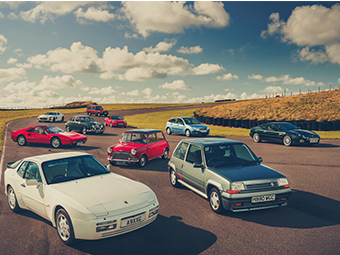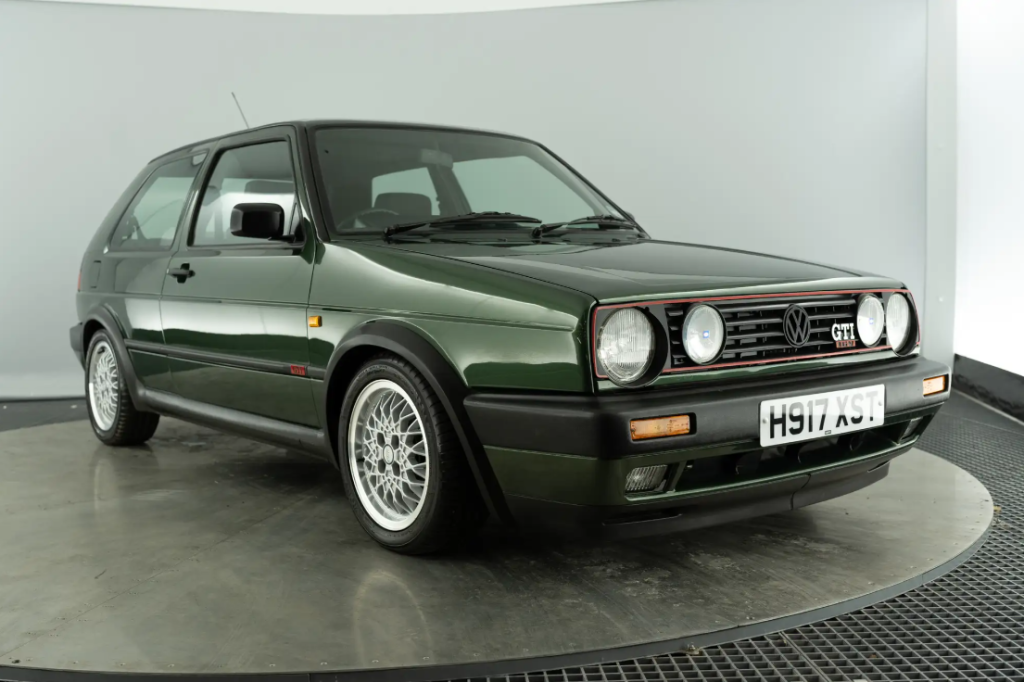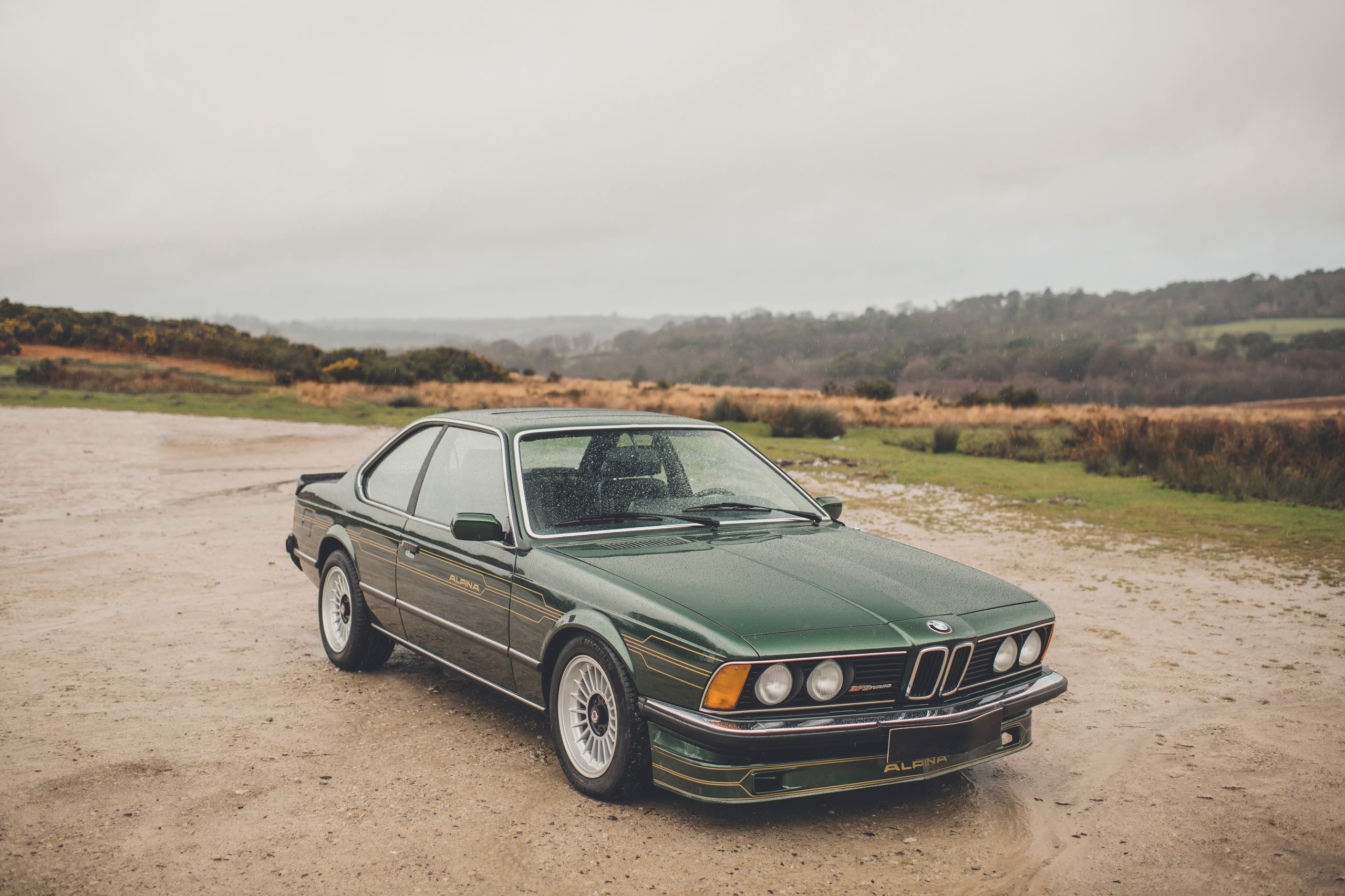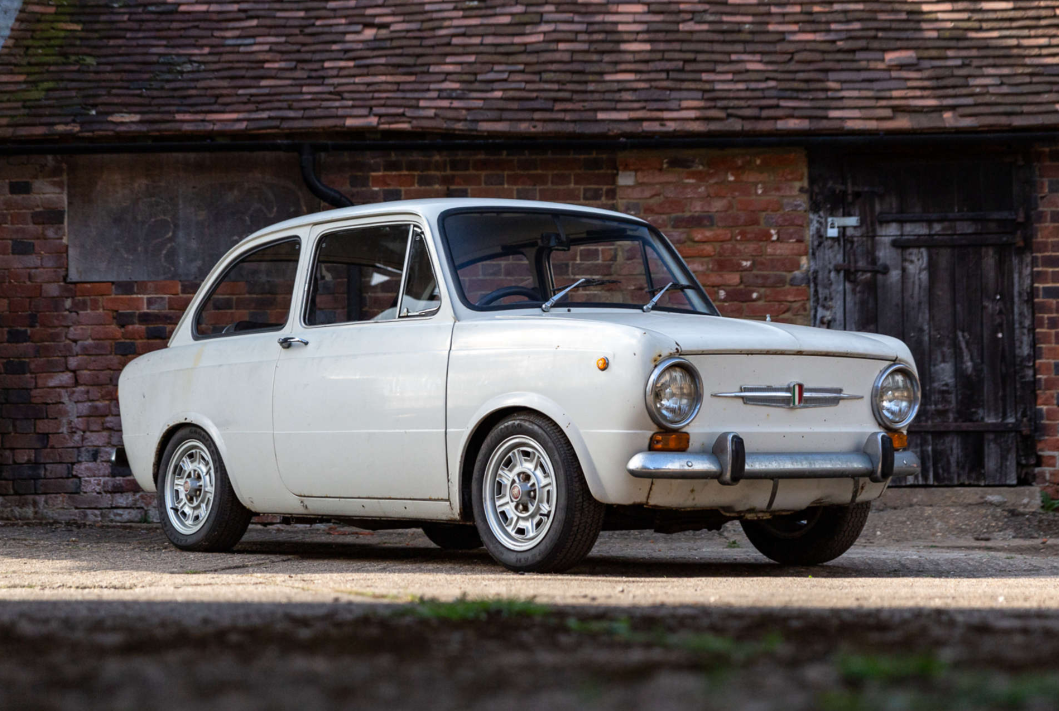Author: Paul Cowland
Photography: Iconic Auctioneers and RM Sotheby’s
Looking at an auction or classified buy that has a few extra parts than the factory intended? Don’t be scared off. It might be the best thing for both of you.
Anyone who saw the recent auction result from CCA at the NEC Resto Show, where a beautiful, factory standard Golf went for the thick end of FORTY THOUSAND POUNDS(!!) will understand two things. Firstly, that the market for great examples of late ’80s and early ’90s ‘hot hatches’ has never been healthier, and secondly, that the closer your cherished classic is to showroom/brochure spec, the greater its value to the mass market.


It’s always been this way, and it was a constant ‘discussion’ with my small Welsh friend when we were filming our TV show, ‘Salvage Hunters Classic Cars’. Drew would always want to stray down some blind alleyway of his unique design vision, where for retail sale, I’d always want to head towards the greatest appeal for the average punter . Which, 9 times out of 10, is whatever is as close to what rolled off the production line as possible.
It makes sense, really. Everybody loves what the factory issued, but not everyone’s taste in modifications is the same. I might love a Dunlop S1 on my Mini Cooper, but you might think it ruins it. Present it on the factory steels however, and we can all agree it’s a fine looking thing.
Mind you, while my retail and TV head definitely steers me towards an OEM aesthetic, when it comes to my own cars, things couldn’t be more different. To my mind, there isn’t a single car out there that doesn’t look better on a set of springs and rims. If it can have a period spoiler or two, even better, and by the time we get to the ’80s and ’90s, the more period body styling, the better.
I’ve often asked myself why I’m thus afflicted, and the answer is pretty obvious. As a very small child in the 1970s, our house was littered with copies of Custom Car and Street Machine magazine. While the occasional copy of Autocar and Motor Sport certainly made it through the letterbox, it was this regular diet of roof chops, metalflake and side pipes that influenced me as my tiny brain developed. Seeing as my Grandad worked for Ford, he would often sneak me glossy press packs of cars he thought I would like, including factory RS Rally weapons and Zakspeed Capris. To this day, I think I’d still rather own a road-going version of the latter, than virtually any modern supercar you’d care to mention.
As the next decade came around, bodystyling very much became the norm. You could walk into your local Halfords and buy front lips, side skirts, rear window louvres and all manner of wider and cooler ‘mag’ wheels, as they were then known. Although I very much doubt that they had much magnesium in them, at this point. After this came the fabled ‘Max Power’ period, but that’s probably a column in itself…
Fast forward to the present day, and this unrelenting diet of modification and upgrades has given me an almost Pavlovian response to the sight of a tastefully modified car. While purists will swoon at the sight of a 1-owner, low mileage, concours-correct Escort Cosworth, I’m busy salivating over the 6-owner, lowered, 50,000-mile example next to it on Rondells and Morettes. Chuck in a Mongoose exhaust and a tasty remap, and you might as well take my money now. The best bit? As well as being precisely the car I want, it’s probably going to be around at least half of the cost of the standard car. It’ll be more useable, more fun and to my mind, at least, more handsome. And if you can have two for the price of one, what’s not to love?
While auctioneers and valuers will always downgrade a modified car, start looking at it as your invitation to pick up a bargain. Many top-end period tuners I believe may even eventually add value to the car you’ve chosen. Don’t believe me? It’s happening already. If you’re lucky enough to own something like an early AC Schnitzer, Hartge or Alpina BMW, you’ll already know that these cars carry a significant premium over their standard counterparts, so I think a d ay may come when the addition of other premium tuners names and parts will begin to add value. GTI Engineering Golfs are already heading that way, and it’s not that crazy to imagine seeing Roger Clark Motorsport-tuned Imprezas and Graham Goode-tuned Sierras benefitting from the same halo effect in years to come.
Even stuff you couldn’t give away just 10 – 15 years ago is now coming into its own. Proving that all fashion is indeed cyclical, the widebody conversions of names like Koenig Specials, Rieger and Kerscher were the financial kiss of death just a decade or so ago. Now? If you’re fortunate enough to have a mint example of any of these names in your garage, they’re often worth a lot more than the car they’re built on. And at the very least, you’ll be guaranteed an entry into RADwood, when the show comes to town.
My advice then, is to seek these cars out. They’ll be cheaper to buy, the modifications often address issues with the standard car, and make it easier or nicer to drive, and depending on who did the work, you may very well be sitting on a potential goldmine if said modifications ever become the ‘done thing’ once again. Even today, a Downton Mini is worth a lot more than a standard example, and as for a Coombs Mk2 Jag…
Seeing where we are, I feel it’ s my ‘Dad duty’ to respectfully remind you that, you will, of course, need to explain all of these choice mods to your insurance company, but being lucky enough to own a few tastefully modified, period correct cars in my fleet, the Hagerty team are very knowledgeable and understanding in what’s hot and what’s not. In most cases, the premiums aren’t hugely different on agreed value, low mileage policies, anyway.
Embrace your inner boy, or girl racer, my friends. A world of increased boost, bigger tailpipes and dump valve sneezes await you. Just make sure to measure your garage before you buy that Mattig Astra. At almost 2 feet wider than the standard car, there’s a very good chance it won’t fit…
Read more:
Five must-have mods for your classic car
The Max Factor: It’s time to celebrate the modified car scene










A few things i have seen in terms of pc memory is the fact there are specifications such as SDRAM, DDR and so forth, that must fit the requirements of the mother board. If the computer’s motherboard is very current and there are no operating system issues, modernizing the ram literally requires under a couple of hours. It’s on the list of easiest laptop upgrade methods one can imagine. Thanks for discussing your ideas.